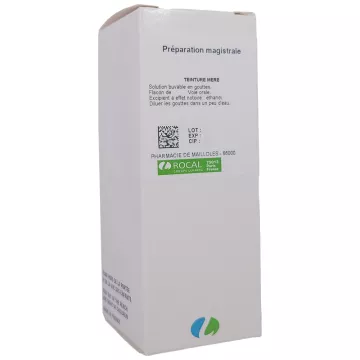
The feeling of heavy legs, visible and swollen veins, cramps at the end of the day... Varicose veins are not just a cosmetic concern, they are the result of an imbalance in venous circulation that is often uncomfortable on a daily basis. At Soin-et-Nature, homeopathy offers a gentle, personalized approach to alleviating the associated symptoms: pain, oedema, throbbing. With targeted remedies such as Vipera redi, Aesculus hippocastanum or Hamamelis virginiana, it is possible to provide lasting relief from these disorders while respecting the balance of the circulatory system.
A varicose vein is a permanent dilation of a superficial vein that impedes the return of blood to the heart muscle. Varicose veins are veins that have become dilated and bluish in color. Varicose veins most often develop on the legs, but also on the thighs. They initially manifest themselves as a sensation of heavy or painful legs and edema.
Varicose veins are unsightly deformations of the veins, most noticeable in the legs. But varicose veins can also affect other parts of the body. Around 30% of the population suffer from varicose veins, and activities requiring long periods of standing are more likely to lead to their appearance.
The most visible varicose vein is the sinuous deformation of the veins, followed by their dilatation, which occurs in the legs. In the rectum, varicose veins are better known as hemorrhoids. Elastic fibers line the walls of the veins, and there comes a point when, as a result of sustained stretching of these fibers, they no longer return to their original shape. This is how varicose veins form, and it's mainly the superficial veins that are subject to permanent dilation.
There are two types of varicose veins. The first is the so-called "pressure varicose vein". It owes its name to the fact that it is the pressure exerted by the blood that causes the vein wall to burst. The second is the "wall varicose vein", which occurs when the elasticity of the fibers no longer functions. Both variants frequently occur in the same individual, for example in pregnant women. The hormones she produces line the vein wall, creating a wall varicose vein. On the other hand, the baby she's carrying compresses the vessels that carry blood to the lower limbs, creating pressure varicose veins.
The main symptom is a blue hose that appears on the surface of the skin. This blue coloring seen through the skin is stagnant blood.
Blood stagnation is due to poor venous function. This causes discomfort in the lower limbs. The most common sensations are leg heaviness, unpleasant tingling or swelling of the veins. At night, cramps can occur, and sometimes there's a feeling of tiredness. Itching may also occur in some parts of the leg. At the end of the day, ankle edema can even occur. Indeed, the painful manifestations of varicose veins appear at the end of the day. But pain can also occur in hot weather, or simply when standing still for long periods.
Homeopathy cannot cure varicose veins that have already formed, but it can relieve pain and alleviate symptoms. In case of pain and swelling of the legs, take 5 granules of Vipera redi 5 CH and 5 granules ofArnica montana 9 CH twice a day. If varicose veins are accompanied by a hemorrhoidal attack, it's advisable to supplement this treatment with 5 granules of Aesculus hippocastanum 5 CH three times a day.
Discover our new range of homeopathic medicines to effectively treat your varicose vein problems with homeopathy.
Homeopathy is a natural method of healing illnesses using highly diluted substances. It was developed in the early 19th century by the German physician Samuel Hahnemann, who observed that certain substances could cause symptoms similar to those of certain diseases when ingested in large quantities. He then decided to dilute these substances to reduce their potency and use them as medicines.
Since then, homeopathy has gained in popularity and become an interesting alternative to treat many health problems, including varicose veins.
Varicose veins are dilated, tortuous veins that usually form in the legs and can cause pain, cramping and throbbing. They are common in pregnant women, the elderly and those on their feet for long periods, but can also occur in men.
Homeopathy can be used to relieve the symptoms of varicose veins and improve blood circulation to prevent their appearance. It can also be used in conjunction with traditional medical treatments to reinforce their effect and accelerate healing.
Among the homeopathic remedies most commonly used to treat varicose veins are :
It is important to note that homeopathy should not be used as the sole method of treatment for varicose veins.